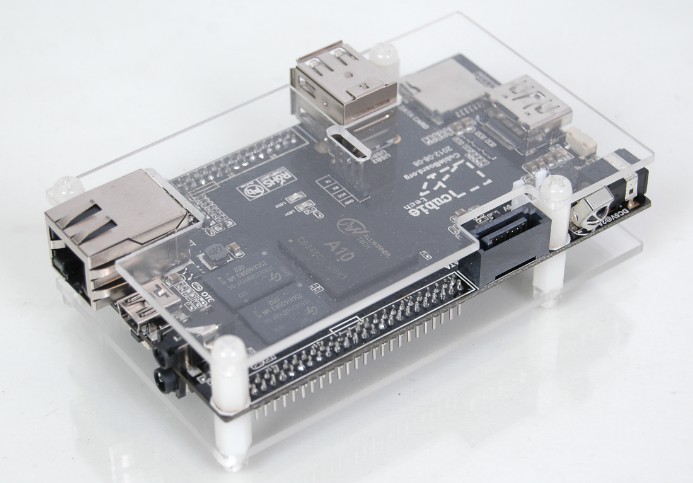HCL:CubieBoard - openSUSE Wiki (original) (raw)
Jump to: navigation,search
The CubieBoard is a small Allwinner A10 based device. It has a very competitive price point and is therefore similar to the Raspberry Pi, however a lot more powerfu.
Technical Data
- 1GHz ARM cortex-A8 processor, NEON, VFPv3, 256KB L2 cache
- Mali400, OpenGL ES GPU
- 1GB DDR3 @480MHz
- HDMI 1080p Output
- 10/100M Ethernet
- 4GB Nand Flash
- 2 USB Host, 1 micro SD slot, 1 SATA, 1 IR
- 96 header pins including I2C, SPI, RGB/LVDS, CSI/TS, FM-IN, ADC, CVBS, VGA, SPDIF-OUT, R-TP..
Writing a disk image to the SD card
- Download the image you want (Leap is stable, Tumbleweed is rolling) from here:
If the direct links above do not work for you, please check the general download directory for the images.
If the direct links above do not work for you, please check the general download directory for the images. - As root extract the image onto your SD card (replace sdX with the device name of your SD card).
WARNING: all previous data on the SD card will be lost. Check first if the device you have selected is really your SD card!
xzcat [image].raw.xz | dd bs=4M of=/dev/sdX iflag=fullblock oflag=direct; sync - Insert the SD card with the openSUSE image into your board.
- Connect the board to your PC via serial port (optional, but helpful for debugging; USB-TTL serial cable needed).
- Connect the board to your monitor (via DVI/HDMI, optional).
- Power on the board.
- Walk through the first boot steps.
- Ethernet is configured to request an IP via DHCP, check your DHCP server for the board IP if used.
- Have a lot of fun...
Default login is root:linux, works on serial console, via ssh, GUI.
